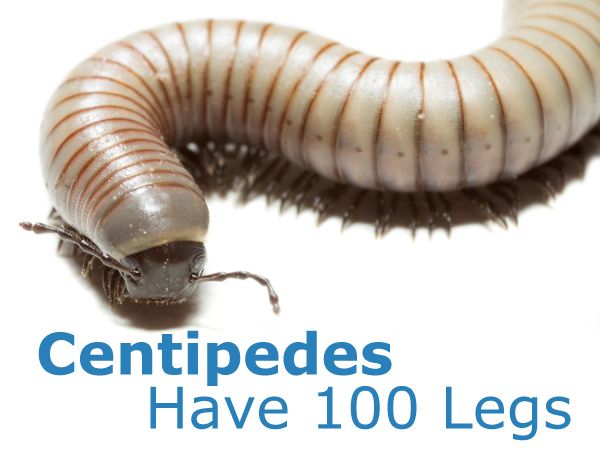Interesting Facts About Centipedes
All species of centipedes are creepy to look at, and they are not pleasant visitors to your home. Although their movement and number of legs make centipedes appear dangerous, they are usually quite harmless. Despite their unsettling appearance, they are pretty fascinating. Read on to learn more about the interesting facts about centipedes.
Centipede Means “100 Legs”

Centipedes don’t have 100 legs like the name implies. Therefore it’s a bit misleading. They can never have exactly 100 legs since they always have an odd number of pairs (one pair per body segment). The typical centipede has 15-30 legs, and some have as many as 177 pairs!
Centipedes Are Fast
The centipede’s speed is essential for hunting and escaping predators. Centipedes are capable of incredible speeds because of their many legs, a segmented body, and absence of a waxy covering. The average house centipede can travel at a rate of 1.3 feet per second!
Centipedes Eat Mostly Meat
As predators, centipedes seek out and eat insects. Spiders, flies, cockroaches, and silverfish are among their favorite foods. Centipedes of a specific size may even consume birds and frogs. The centipede does this by entangling its prey and waiting for the venom to take effect before swallowing it.
Centipede Is A Good Mother
Although you would not think of a centipede as a nurturing mother, many of them actually care deeply for their young. In the case of female centipedes, a mass of eggs is deposited in a burrow by the Geophilomorpha (soil centipedes) and also the Scolopenderidae (tropical centipedes). The mother then encloses her body over the eggs and stays with them until they hatch, guarding them against danger the entire time.
Centipedes Aren’t As Waxy As They Seem
Most arthropods, including centipedes, have a waxy covering to prevent dehydration. But centipedes aren’t like other arthropods! Centipedes lack a waxy surface. Thus they quickly lose moisture despite their appearance. Because of this, their habitats tend to be very dark and wet. Despite this, the absence of a waxy coating isn’t always a disadvantage. They can move more swiftly now that the covering is gone.
Centipedes Can Regenerate Their Legs
Centipedes molt! Since they grow new legs with each molt, their total leg count increases as they age. Yet the craziest thing about it is that it may regenerate if they lose a leg to a predator! Centipedes can escape from a predator’s grasp by removing several of their legs. And when they molt, they just grow new legs to replace the ones they shed. Some centipedes have a few legs shorter than the rest because they may have to molt many times to properly regenerate the legs.
Centipede Is An Ancient Creature
In reality, centipedes belong to one of the world’s oldest animal groups. Some centipede fossils are older than 400 million years! During those millions of years, they underwent a process of evolution that ultimately resulted in the centipedes we see today.
Centipedes are fascinating creatures despite their terrible reputation. They are, of course, one of those animals that seem the coolest from a distance. Call us now if you’ve seen any centipedes invading your home, and we’ll immediately take care of the problem. Vinx Pest Control will be at your service!